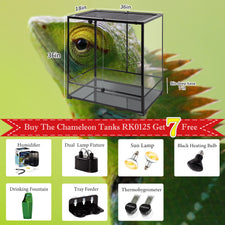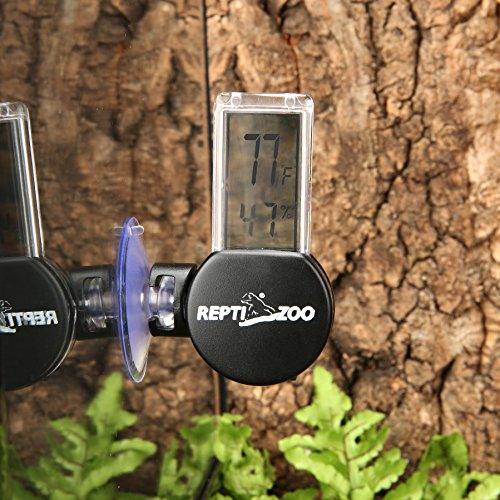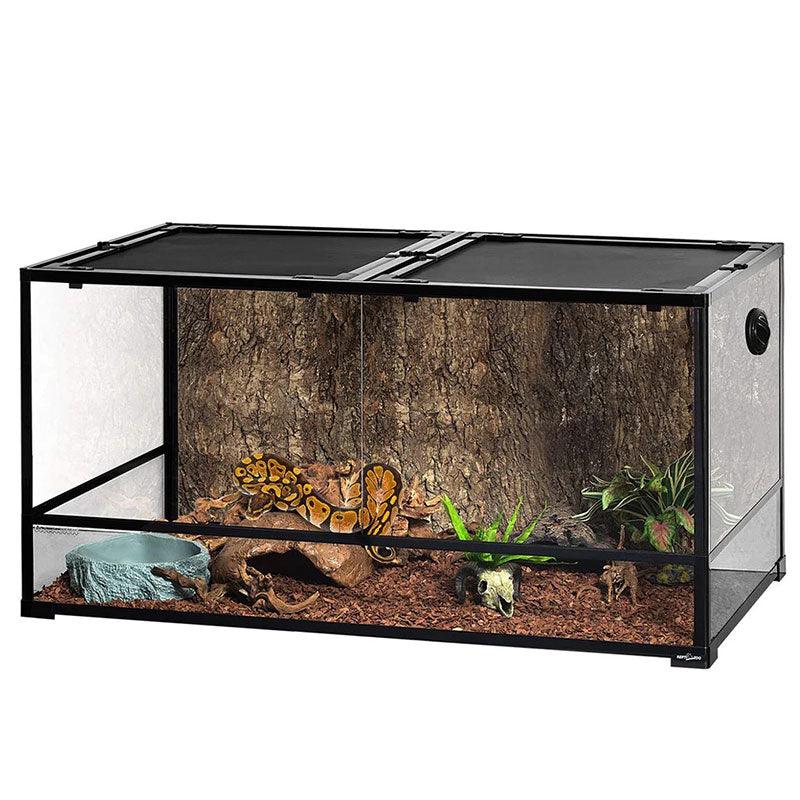The Ball Python is undoubtedly one of the most famous pet pythons in the world. They are naturally shy, but this is outweighed by their ideal suitability, friendly temperament, manageable size, and wide range of colors and patterns. These amazing snakes are renowned for their resilience, impressive longevity, ease of care, and the capacity to live for up to 20 to 30 years. Their main diet consists of rodents, and they have minimal lighting and housing needs. Ball pythons are non-venomous snakes and are very easy to handle, making them the best choice for individual personalities. In this ball python care sheet, we will discuss each and every aspect of ball python care and needs, and how you can take good care of them.
Ball pythons as pets
Ball pythons have a good reputation as pets, thanks to their unmatched qualities. They originate from the grasslands of Central and West Africa, and in their natural habitat, these carnivores primarily feed on rodents, shrews, and birds. Their hunting technique is very interesting; they use a nonvenomous approach, striking and constricting their prey for a meal. If you consider them companions, they attract snake enthusiasts with their gentle nature and can become great members of any household for many years to come.
Ball python care
To take good care of a ball python, you need to create a perfect snake enclosure that caters to their individual needs and preferences at all levels. Whether you choose simplicity or extravagance, it is important to keep their maintenance aspects in mind. Remember that the more elements present in their care, the more responsibility there will be to clean and disinfect them. It is essential to maintain a balance between their habitat and upkeep to ensure stability. In captivity, ball pythons have very low needs and do not require any special requirements.
Housing Requirements
When selecting enclosures for ball pythons, you will find a wide range of options, from simple to extravagant. However, you can tailor the enclosure according to the specific needs of your snake. Different types of enclosures work well for pythons, including melamine racks, plastic sweater boxes, and commercial plastic cages.
Another option for enclosures is a glass reptile terrarium, which is suitable, but there is one concern: maintaining the humidity levels. Selecting the enclosures according to age is also important to avoid stress and anxiety. A young ball python can easily live in a snake cage of 10 to 30 gallons, and as your snake grows, you need to increase the size of the tank accordingly. A ball python can reach its adult size in three years, so you will need a tank large enough for your pet to easily stretch out. An adult ball python will require at least 40-gallon tank for proper growth and care.
Heating and lighting
Maintaining a proper thermal gradient is also crucial within the enclosure for the well-being of your snake. It is essential to create a hotspot area on one end of the snake cage that ranges from 88 to 96 F. The other end should have a cooler spot with a range of 78 to 80 F. Always keep in mind that the ambient temperature of the snake tank should not drop below 75 F. To ensure the temperature stays at the proper level, monitor it regularly and avoid any guessing. Use a digital thermometer with a probe to monitor the indoor and outdoor temperature. Simply attach the thermometer to the cool end and place the probe at the warm end, allowing you to simultaneously monitor both sides of the enclosure and provide the ideal environment for your snake.
There are various options available for heating a ball python enclosure, and you must choose carefully. These options include heating pads and tapes, basking bulbs (both nighttime and daytime bulbs), and ceramic heat emitters. When using basking bulbs and heat emitters, keep a close eye on the enclosure's humidity, especially if there is a screen top used, as it can dry the air quickly. To regulate the heat source effectively, use rheostats, thermostats, or reptile timers. Avoid using hot rocks, as they can heat unevenly and cause burns.
While lighting is not necessary for a ball python snake cage if you choose to use it, maintain a cycle of 12 hours on and the remaining time off. This will prevent stress in ball python snakes. Ball python snakes prefer humidity levels between 70 to 80 percent, as it helps them with proper shedding.
Substrate
There are different substrate options available for ball python enclosures, including reptile carpet, paper-based bedding, aspen wood shavings, and forest bedding. If you choose aspen wood shavings, it's essential to clean them on a weekly basis to avoid any soiling or wetness. However, avoid using cedar and pine bedding, as it is full of oils that can cause irritation to your ball python skin. Opt for a suitable substrate to create a clean and comfortable environment for your pet, promoting their overall health and well-being.
Decorations
Adding a hiding area in the ball python snake enclosure is essential for their comfort. Always opt for natural or synthetic wood hiding logs as they are the best choices. These hiding spots not only act as a refuge but also allow your ball python to regulate their body temperature by moving away from the direct basking areas. Ensure that the size of the hiding log is sufficient so that your ball python can easily fit inside it comfortably, and as your ball python grows, change the size accordingly. Enrich the environment of the enclosure by providing climbing branches, as ball pythons love climbing. For extra enrichment and aesthetics, consider adding plants to the background setup.
Cleaning snake enclosure
In order to maintain a clean and healthy environment for ball python snakes, follow the steps for cleaning the enclosure.
- Put your ball python in a separate tank and secure it temporarily.
- Clean the snake tank and all the decorations thoroughly with a reptile habitat cleaner or a 3% bleach solution. Let the bleach solution stay on the surface for 10 minutes for proper disinfection. For proper cleaning see the instruction in the manual.
- Now rinse everything properly with water and make sure that the cleaner and bleach smell is removed.
- Let the furnishing and tank dry completely and after that add clean and fresh substrate.
- Finally, after all the cleaning process return your pet snake to its habitat.
Feeding your Ball python
To ensure that your ball python gets proper nutrition, feed them a weekly diet of appropriately sized rodents. "Appropriately sized" means items that do not exceed the ball python's limit. As your ball python grows, it can eat larger rats over time.
After your ball python has finished eating, avoid handling them for at least a day to prevent regurgitation. You can also offer frozen, thawed, or pre-killed rodents as live rodents can be dangerous for them. Ball pythons may experience reduced appetite during certain times, mostly in winter months, which is normal for healthy individuals.
Always monitor your snake's body condition and weight every few weeks. An adult ball python can be fed every 1 to 2 weeks, while younger pythons should be fed weekly to support their growth. During extremely cool periods, your ball python may go off feed, and there is nothing to worry about. Additionally, remember that snakes generally do not eat while in the shedding cycle.
Handling of ball pythons
Every time you handle your ball python, it's essential to start by washing your hands with soap before and after to prevent any kind of disease transmission. Handling a ball python might seem difficult at first, but with the right technique and patience, it can become one of the most rewarding experiences. The key to handling your ball python is to not startle them during the process. Begin by gently touching your pet snake while they are still in their enclosure and let them get familiar with your presence and touch.
Once you feel that your snake is getting comfortable, place your hand under the mid-body to support their body weight, and then lift them up onto your arm. If your ball python wants to coil around your arm or body, allow them to do so and give them the freedom to explore the area while you maintain a gentle and secure hold. Remember to handle your snake calmly and respectfully, building trust and a bond over time.
Gentle handling is essential when interacting with your ball python to avoid triggering any defensive response. Keep in mind that ball pythons are not aggressive and will not bite unless they feel threatened or in a dangerous situation. If your snake displays behaviors like hissing, biting, or perching upwards, it is their natural way of expressing displeasure and discomfort. You must respect the boundaries of your snake and avoid putting them in any kind of discomfort if they exhibit these defensive behaviors.
When you adopt your ball python, give them ample time to adjust to the new environment; typically, they need 1 or 2 weeks to acclimate before attempting handling. Once you and your pet ball python feel ready, start handling it in small sessions at the beginning of each week, and each session should last for 5 to 10 minutes. As your snake grows and becomes more comfortable with handling, you can extend the session to almost 30 minutes. Consistent handling will help maintain the tameness and strengthen the bond between you and your snake.
Ball python size
Ball python snakes are famous as the smallest python species in Africa. The females of this species reach an average length of 3 to 5 feet, while males are typically smaller, growing up to 2 to 3 feet. The ball python displays noticeable sexual dimorphism due to the female's larger size, and most studies show that this difference in size is due to differing diets. Although the average length of female pythons is around 5 feet, not every ball python will attain this size. Those ball pythons that stay in captivity will reach their adult size in three years. The average weight of adult pythons ranges between two to four pounds, which usually depends on their size and sex.
How long ball pythons can live without eating?
Ball pythons have a very slow metabolism, and due to that, they can go for weeks or even months without eating. However, if they stay without food for an extended period, it can lead to health issues. If you notice that your snake misses two feeding sessions, and it's not their shedding time, it's time to seek advice from a vet. By regularly monitoring your ball python's eating habits and seeking advice from vets, you can ensure their well-being.
How many times ball python shed?
When young ball pythons go through different growth phases, they may shed at least once a month. On the other hand, fully grown adult ball pythons shed a few times a year. Shedding is a natural process that allows them to replace their old skin with a new one. As a responsible caretaker, it's essential to understand and assist the whole shedding process, contributing to their well-being and making their entire life span magnificent.
Do ball python snakes bite?
Generally, ball pythons are very docile, and they can tolerate handling very well. However, like all other snakes, they have the potential to bite if they feel threatened or stressed. During shedding periods, their vision is temporarily impaired, which can lead to misinterpretation, and they may mistakenly perceive your hand as a food source, resulting in accidents. It is crucial to handle ball pythons with proper care and respect, especially during shedding sessions. Using proper handling techniques and understanding their needs contribute to a positive and rewarding experience with these incredible reptiles.
Conclusion
Ball pythons have won the hearts of many reptile enthusiasts globally because of their striking colors and patterns. By providing them with an ideal enclosure, appropriate substrate, and understanding their habitat and handling needs with care, you can have a magnificent creature in your house.











